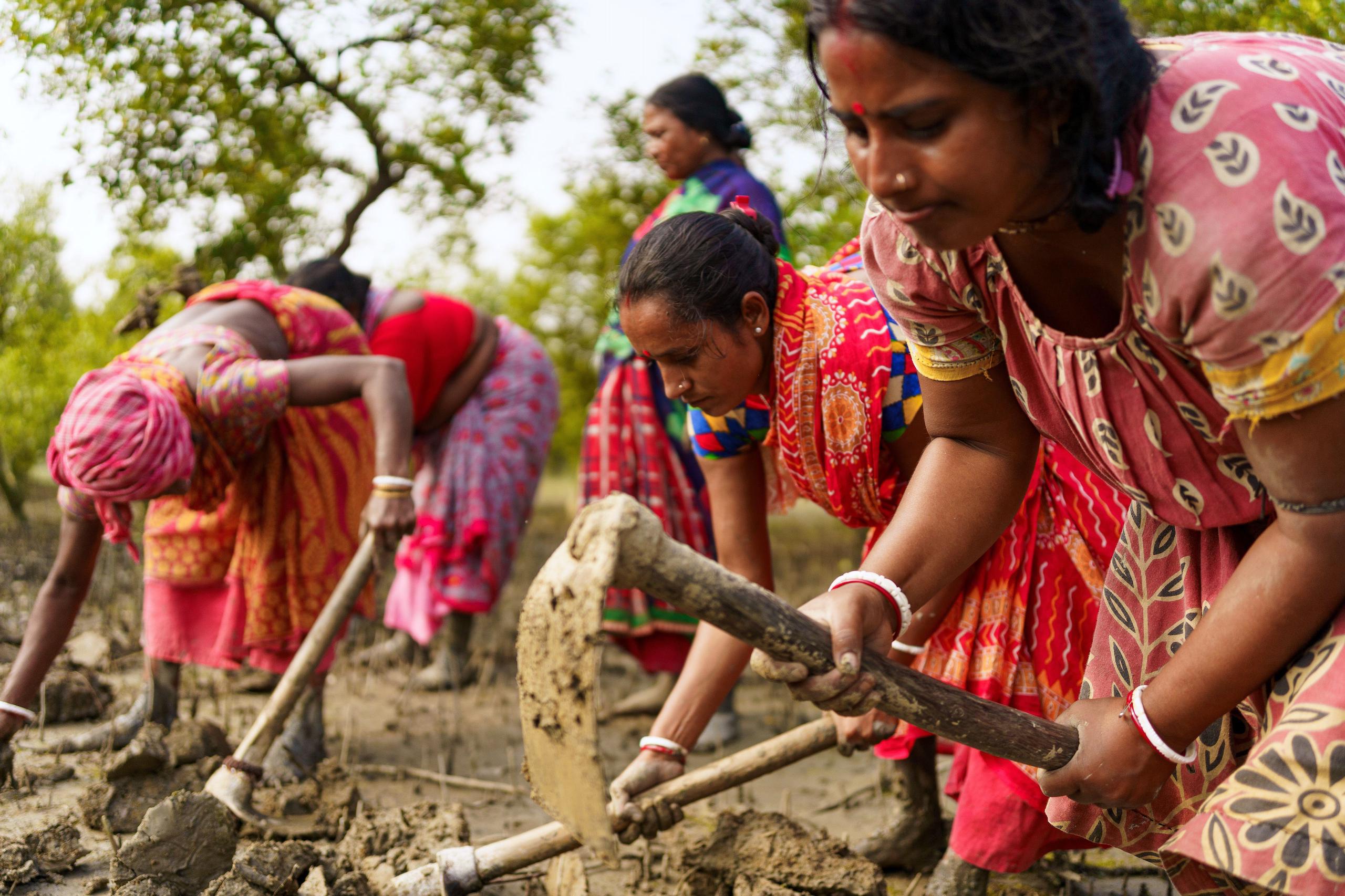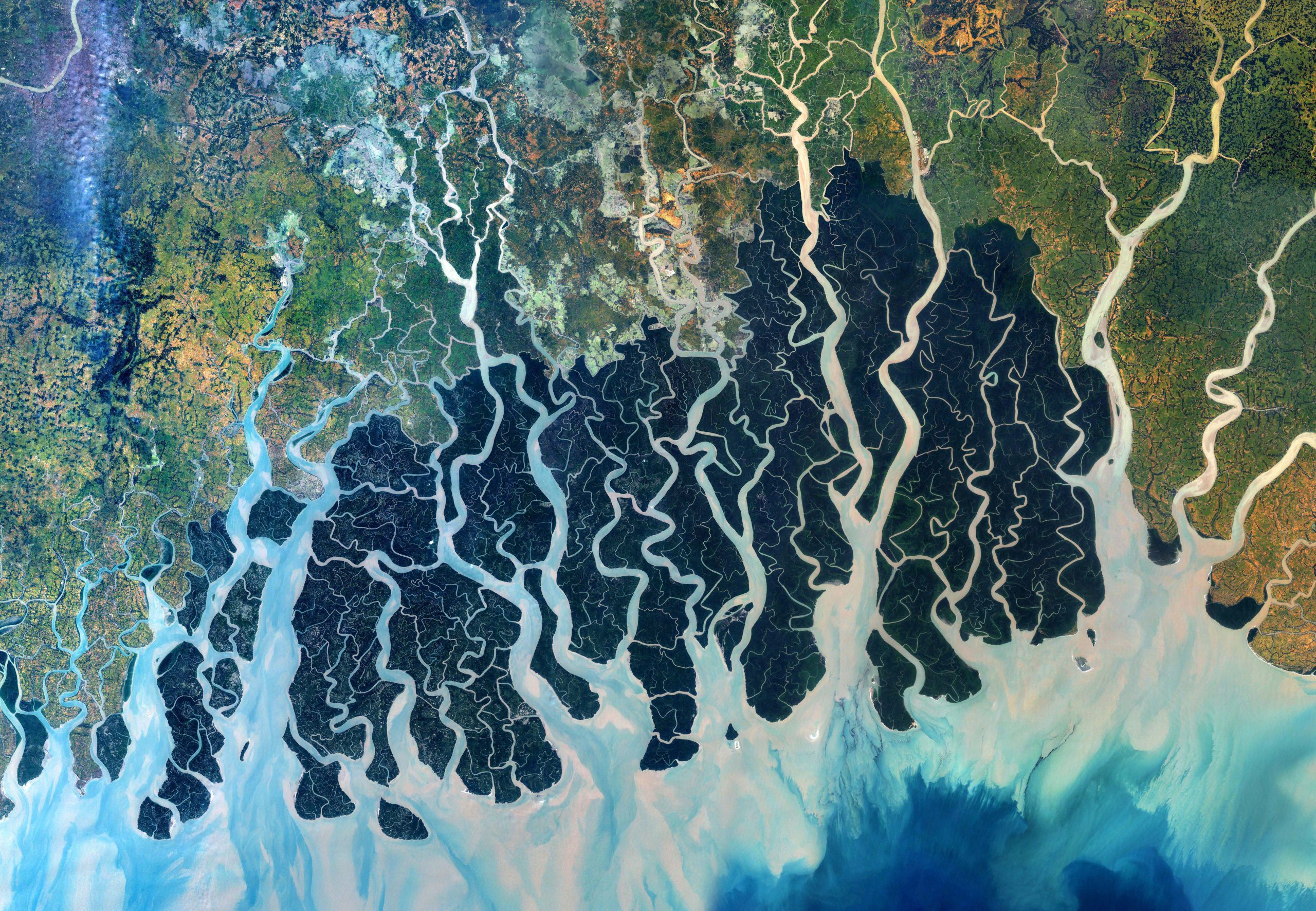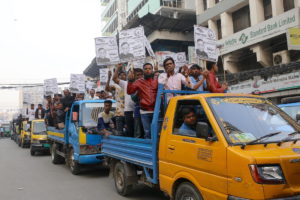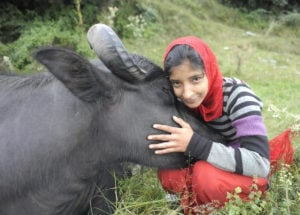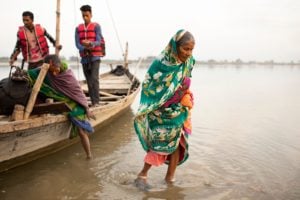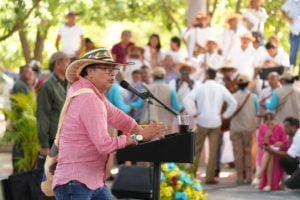On a three-day visit of a US delegation to Bangladesh last month, both refugees and climate change featured high on the diplomatic agenda. Delegates acknowledged Bangladesh as the world’s seventh most climate-vulnerable country, with Washington pledging support to help Bangladesh tackle climate change. They also discussed the Rohingya refugee crisis. However, while refugees and climate change merit separate discussions, there is a growing need to think of the two as dual challenges, particularly when they impact multiple states.
In 2022, 7.1 million Bangladeshis were forcibly displaced by weather-related events, a figure forecast to nearly double by 2050. One US Agency for International Development report estimates that 90 million Bangladeshis (56 percent of the population) live in regions classified as “high climate exposure areas.” Half of them face “very high” exposure.
The issue is not confined to national borders either, as demonstrated by ongoing climate migration in the Sundarbans, the largest mangrove forest in the world, spanning Bangladesh and India. The forest serves as the critical first line of defense against natural disasters, such as cyclones and flooding. However, rising sea levels and intensified cyclones are compromising its ecological integrity, making it increasingly vulnerable. Consequently, many citizens living along the border in India and Bangladesh are compelled to migrate.
Whilst most of this displacement is internal, a substantial portion ends up moving from Bangladesh to India. The undocumented nature of such movements means that numbers are hard to come by, but according to the Asia Development Bank, they represent “the largest single international migration flow,” outstripping the number of migrants crossing the Mexican-US border.
Forgotten victims?
Cross-border migration is fraught with legal ambiguities and human rights challenges. The international community urgently needs to determine whether “climate refugees” deserve “legal protected status” (itself seen as problematic by some) and, if not, to devise alternative mechanisms for their protection and support. The current legal limbo means migrants languish without recognised citizenship or settlement rights; whether voluntary or forced, they must navigate a labyrinth of bureaucratic uncertainties, leading to their characterisation as “forgotten victims”. The decision to grant legal protected status to climate refugees should be informed by comprehensive data on internally displaced persons and reinforced by robust mechanisms under the UN Framework Convention on Climate Change. Complicating this decision is the fact that migration itself is also a form of climate adaptation. Planned retreats from ecologically fragile areas, a proactive strategy involving the deliberate relocation of people and infrastructure away from vulnerable areas prone to natural hazards, must also be integrated into broader climate adaptation strategies.
The reluctance of India and Bangladesh to recognise refugees’ legal status under international law, and the fact that neither country is a signatory to the 1951 Refugee Convention, present significant barriers to cross-border collaboration on migration challenges. The absence of legal protections leaves climate migrants in a precarious position, with little recourse to assert their rights or access essential services. Human rights abuses, including human trafficking and modern slavery and inadequate access to housing, healthcare and education, are common occurrences among this vulnerable population.
Even without a legal definition, though, there are a host of actions that could be taken. Among Bangladesh’s most effective initiatives is its National Adaptation Programme of Action, which sets out environmental and anthropogenic adaptation strategies. The scheme aims to enhance the resilience of communities vulnerable to climate change, providing them with the necessary tools and resources to adapt to changing environmental conditions. In India, the Mahatma Gandhi National Rural Employment Guarantee Act 2005 (MGNREGA) advocates for mangrove reforestation and organic farming to bolster ecological and economic resilience and disaster readiness in vulnerable regions like the Sundarbans. Unfortunately, MGNREGA has faced notable obstacles, including low wage rates, delayed payments, system leakages and administrative delays in declaring drought. Initiatives such as MGNREGA need to be efficiently administered before they can be properly utilised to deal with climate-induced migration.
A transnational problem needs a transnational response
Ongoing challenges and governance failures in the Sundarbans emphasise that countries in the region face common problems and should, therefore, utilise common governance mechanisms to address them — even if current institutions are sub-optimal. While Bangladesh and India already cooperate on biodiversity conservation in the Sundarbans, the plight of its residents is absent from policy discourse.
Regional intergovernmental organisations like the South Asian Association for Regional Cooperation (SAARC) and the Bay of Bengal Initiative for Multi-Sectoral Technical and Economic Cooperation (BIMSTEC) could offer platforms where India and Bangladesh exchange ideas on governing climate migration. This is especially important because once issues, such as climate migration, spill over borders, they become significantly more challenging to deal with politically. For example, India’s decision to implement the Citizenship Amendment Act (CAA), coupled with divisive rhetoric surrounding illegal Bangladeshi immigration, further stigmatises cross-border migration from Bangladesh. These factors strain diplomatic relations and impede collaborative efforts to address climate-induced migration.
The Citizenship Amendment Act (CAA) is an Indian law passed in 2019 that provides a path to Indian citizenship for religious minorities from neighbouring countries, with the exclusion of Muslims. Critics argue that the controversial law not only discriminates against Muslims, but also violates India’s secular principles, undermining the country’s tradition of religious pluralism.
However, despite the potential benefits of using existing frameworks, geopolitical dynamics in the region mean they are not as effective as they could be. Currently, they regularly fail to facilitate the necessary cooperation and resource allocation needed to manage the flow of climate migrants effectively. This governance gap not only hinders the development of sustainable solutions but also places an undue burden on the host state to manage inflows of migrants.
Non-governmental and development organisations have become increasingly crucial in addressing the governance void. These organisations lead efforts in providing humanitarian aid, advocating for migrant rights and supporting cross-border cooperation, when governments fail to do so. Practical Action, an international NGO operating in both Bangladesh and India, focusing on climate change adaptation and disaster risk reduction, successfully promotes cross-border cooperation and knowledge sharing between the two countries. ENGAGE4Sundarbans is another cross-border initiative focusing on the social resilience of both Indian and Bangladeshi Sundarban communities.
Despite the vital role these organisations play, they are not a substitute for comprehensive governance. Their activities must be integrated into broader governance frameworks to ensure consistency, long-term sustainability and alignment with national and international law. Additionally, leveraging the expertise and on-the-ground knowledge of NGOs is essential in shaping governance policies. India, Bangladesh and international bodies must establish mechanisms to incorporate their insights into decision-making processes at all levels.
The climate crisis is a migrant crisis
There is growing recognition of the need for collaborative solutions, with researchers at the Dhaka-based NGO SAJIDA Foundation advocating for the Indian and Bangladeshi governments to think of the Sundarbans “as a shared natural asset.” One potential avenue is to establish bilateral agreements between India and Bangladesh, as no such formal agreements on migration or climate change between the two exist, despite being both allies and neighbours. These agreements could outline frameworks for cooperation, information-sharing and joint initiatives to manage migration flows and assist affected communities.
Additionally, creating regional task forces across India and Bangladesh, comprising representatives from government agencies, international organisations, civil society groups, and affected communities, can facilitate coordinated responses and decision-making. Investing in infrastructure and capacity-building in vulnerable regions, including resilient housing, enhanced early warning systems, and improved agricultural practices, is also crucial to curb high levels of cross-border migration. By pooling resources and expertise, India and Bangladesh can maximise the impact of their efforts and build more resilient communities.
Advocating for increased international support and funding for climate adaptation and migration management efforts is also essential. The two nations both have institutional experience they can draw on, having regularly advocated for the Global South at events such as COP, the G20 and the Voice of the Global South Summit. However, by formally presenting a united front, India and Bangladesh can amplify their voices on the global stage and mobilise resources to address their shared challenges. While US support on managing climate change – as pledged following its February meeting with Bangladesh – is welcome, the climate crisis is increasingly becoming a migrant crisis. Regional cooperation may prove as important as international assistance. India and Bangladesh, however, should not wait for a global consensus. Through joint initiatives and coordinated action, they can demonstrate proactive leadership in addressing climate-induced migration, both domestically and across their shared borders.
This article has been co-published by South Asian Voices (Stimson Center) and The Third Pole
